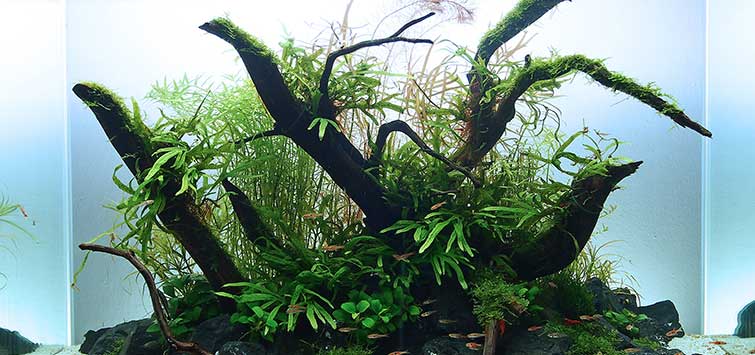Choosing the Right Type of Aquarium Moss
If you’re looking for an unusual plant for your aquarium, you may be interested in moss. One type of moss is Vesicularia dubyana, also known as Singapore moss and Java moss. This moss is native to Asia and is quite common in the aquarium trade.
Moss can be tricky to keep alive, but it can live quite happily in your aquarium if the proper conditions are met. It will also grow at a slow pace, which can be frustrating for those who want to see their plants grow. As with all plants, the right type for your aquarium depends on your patience level, preferences and tank setup.

Careful handling is crucial for keeping moss healthy and looking great. Keeping it free from algae is essential. If you’re not careful, it can wreak havoc on your aquarium. To ensure that your moss is healthy and vibrant, you should clean it regularly and thoroughly with a siphon. While siphoning, make sure you waggle the siphon near the moss and suck up any debris. However, beware that some mosses attach strongly to the substrate. In this case, you may be better off simply separating it from the substrate.
In addition to being a nuisance, moss can also carry harmful bacteria. To prevent this from happening, you should be careful when buying aquarium moss. It’s important to read the label and understand the warnings so you don’t accidentally contaminate your tank. As a precaution, you can also check for mussels in your tank by removing the live plants and removing the contaminated moss.
To keep your aquarium moss from spreading, you need to keep the tank water well-circulated. If you don’t want your moss to spread, you can use suction cups to keep it attached to the glass. A good filter system can also help maintain a stable environment for moss.
Weeping Moss, native to East Asia, is an excellent aquarium plant. This plant has a unique tapestry-like growth habit. Unlike most other plants, this one requires a dry setting, and you can’t plant it if it doesn’t have a dry environment. It grows slowly and requires patience. You may need to wait up to three weeks for it to produce any noticeable results.
Some mosses are difficult to attach to any substrate, so you’ll need to tie them to the substrate by using sea-line. While this method does take more practice, it provides more precision. It will also allow you to use the moss more effectively. Despite these problems, however, you can use cyanoacrylate glue, which is not toxic for the fish in your tank.
Mosses are hardy plants with fewer demands than other aquarium plants. Most mosses are virtually indestructible in a tank with stable water parameters. However, mosses are very sensitive to algicides. Usually, the best solution is to cut off the top layer of the infested moss and let the bottom portion regrow. However, this method is only effective if you provide the best conditions for moss growth. You should also keep algae away from the bottom portion of the moss.





